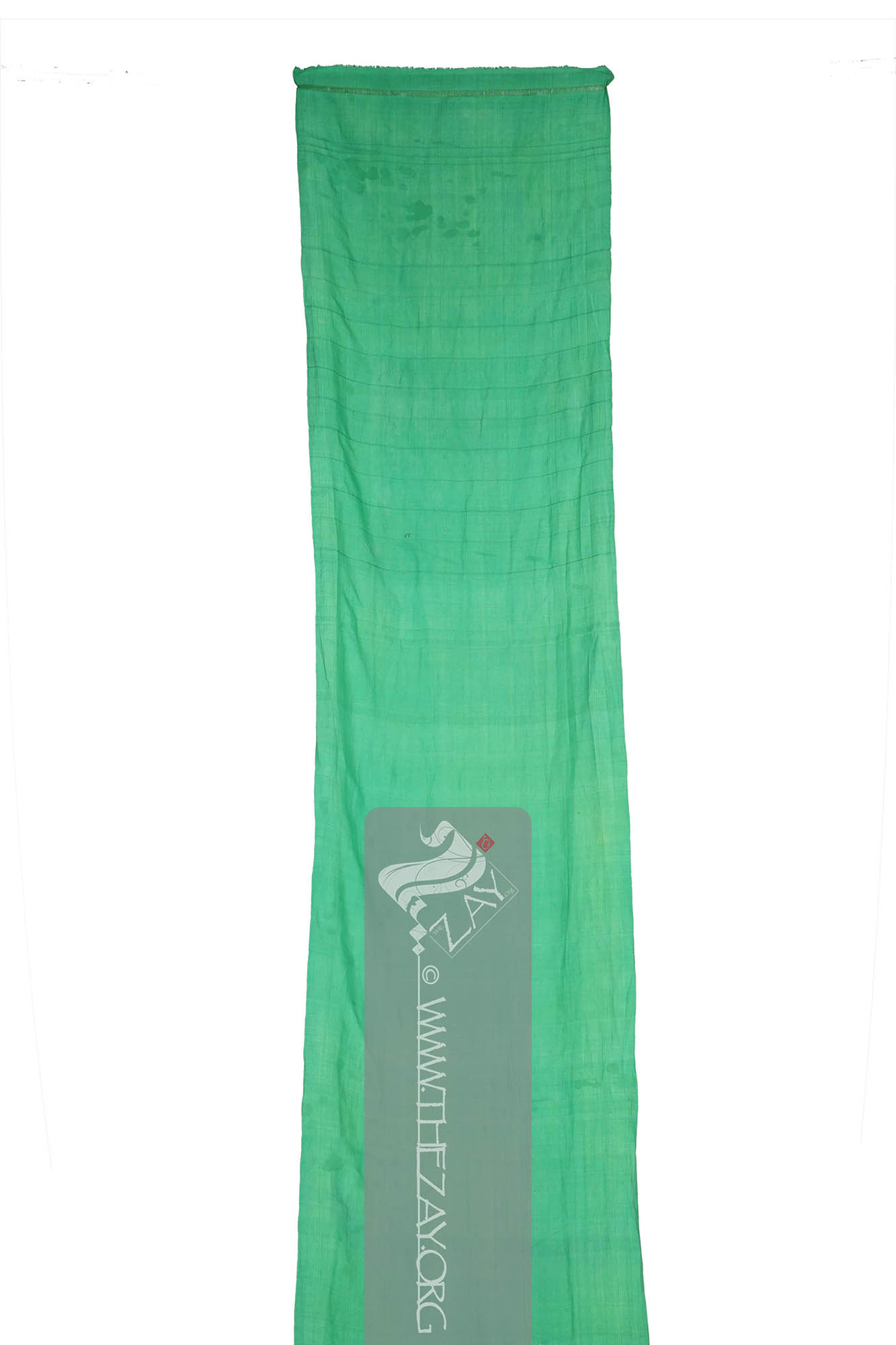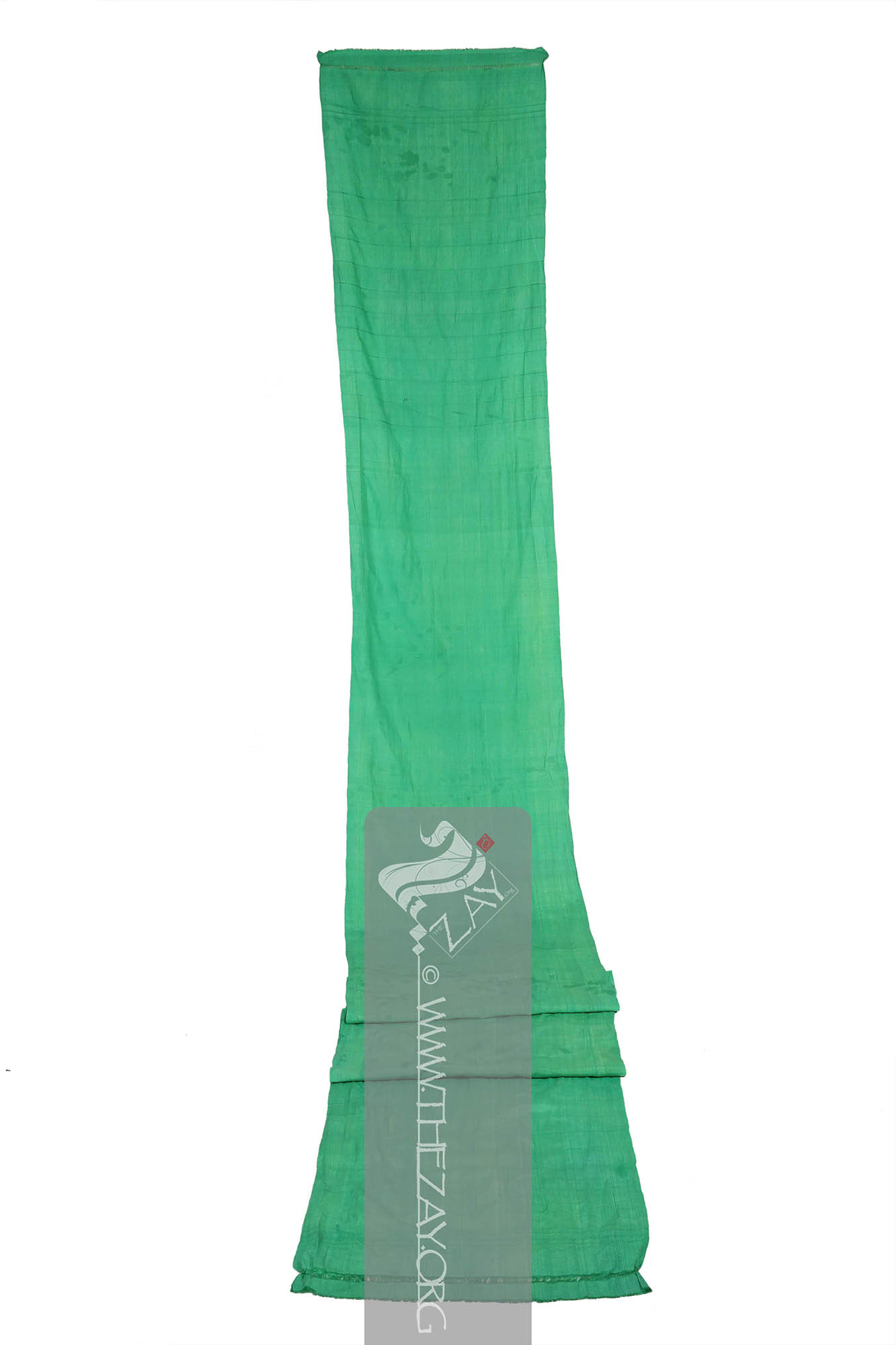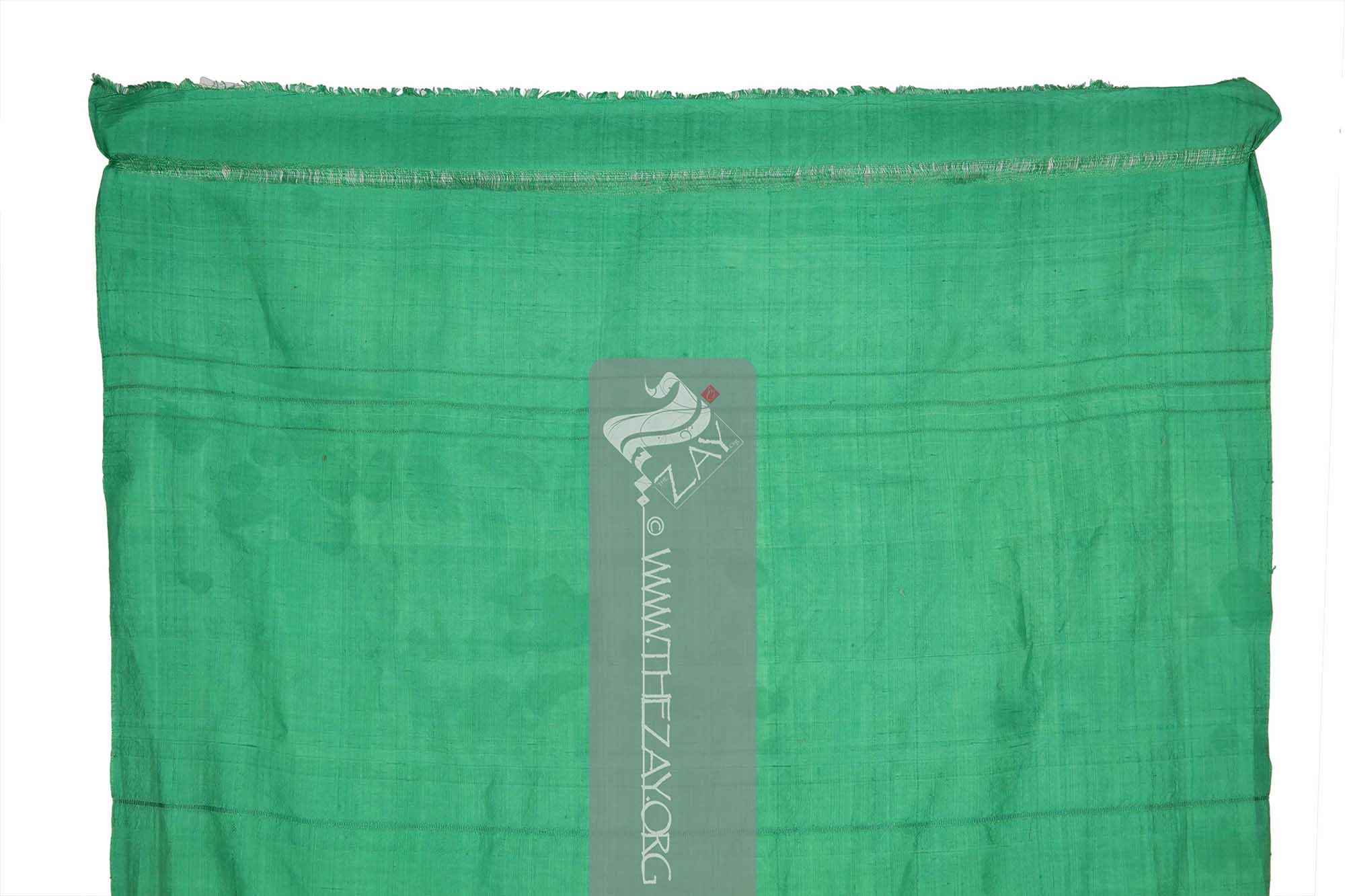Object NotePart of a lot purchased together which includes a woman’s ensemble –blouse, pair of trousers and a jacket (
ZI2020.500741 ASIA,
ZI2020.500741a ASIA,
ZI2020.500741b ASIA) and six other pieces not related to the ensemble
(ZI2020.500741d ASIA, ZI2020.500741e ASIA, ZI2020.500741f ASIA, ZI2020.500741g ASIA, ZI2020.500741h ASIA, and ZI2020.500741i ASIA).
Object HistoryThis plain green silk fabric was purchased by
Dr. Reem Tariq
Ṭariq: (Arabic; Synonym: tulle_bi_talli
Tūlle_bi_tallī: (French: Tulle – a city in France where fine material for veil was first made; Turkish: tel – wire; Synonym: tariq; talli; badla; khus_dozi ), series of small metal knots made on a woven net ground as embellishment. The term is commonly used in the North African Arab region specifically in Egypt.
; talli; badla; khus_dozi ), series of small metal knots made on a woven net ground as embellishment. The term is commonly used in the Levant Arab region specifically in Lebanon.
El Mutwalli
Dr. Reem Tariq
Ṭariq: (Arabic; Synonym: tulle_bi_talli
Tūlle_bi_tallī: (French: Tulle – a city in France where fine material for veil was first made; Turkish: tel – wire; Synonym: tariq; talli; badla; khus_dozi ), series of small metal knots made on a woven net ground as embellishment. The term is commonly used in the North African Arab region specifically in Egypt.
; talli; badla; khus_dozi ), series of small metal knots made on a woven net ground as embellishment. The term is commonly used in the Levant Arab region specifically in Lebanon.
el Mutwallī: Founder (CEO) of the Zay
Zay: (Arabic: costume, Pl. azyaā’), a set of clothes in a style typical of a particular country or historical period. Initiative, a public figure, speaker and author. An expert curator and consultant in Islamic art and architecture, interior design, historic costume, and UAE heritage. from Kerry Taylor Auctions, London in 2020 to be added to The
Zay
Zay: (Arabic: costume, Pl. azyaā’), a set of clothes in a style typical of a particular country or historical period. Initiative Collection.
Object Features This green (
tussar
Tūssār: (Sanskrit: tasara – shuttle), produced from larvae of several species of silkworms belonging to the moth genus Antheraea. They live and sustain themselves in the wild forests with trees belonging to Terminalia, Shorea robusta , and other food plants native to South Asia.) silk fabric is possibly a man’s turban (
pag
Pāg: (Hindi: pagri – turban), long cloth generally either white or dyed in one colour for tying around the head in a turban. From which it is probable the term bāgh or bāghah is derived colloquially in Iraq to denote to basic plain cloth. ) possibly from the Sindh region of the Indian subcontinent.
It is a plain green woven
scarf
Scarf: (English), usually a rectangular piece of cloth loosely worn over the shoulders, upper body and arms, and sometimes also over the head. with no embellishment except for very thin horizontal lines running left to right parallel to one another created possibly by weaving a superlative (
warp
Warp: One of the two basic components used in weaving which transforms thread or yarns to a piece of fabric. The warp is the set of yarns stretched longitudinally in place on a loom before the weft
Weft: one of the two basic components used in weaving that transforms thread or yarns into a piece of fabric. It is the crosswise thread on a loom that is passed over and under the warp threads. is introduced during the weaving process. ) thread at a fixed interval.
It has a (
selvedge
Selvedge: (English: Self-finished edge or self-edge: a dialect forming transition), an edge produced on woven fabric during manufacture that prevents it from unravelling. Traditionally the term selvage applied to only loom woven fabric, presently it could be applied to flat knitted fabric too. ) to
selvedge
Selvedge: (English: Self-finished edge or self-edge: a dialect forming transition), an edge produced on woven fabric during manufacture that prevents it from unravelling. Traditionally the term selvage applied to only loom woven fabric, presently it could be applied to flat knitted fabric too. (
weft
Weft: one of the two basic components used in weaving that transforms thread or yarns into a piece of fabric. It is the crosswise thread on a loom that is passed over and under the warp threads.) weaving with the
warp
Warp: One of the two basic components used in weaving which transforms thread or yarns to a piece of fabric. The warp is the set of yarns stretched longitudinally in place on a loom before the weft
Weft: one of the two basic components used in weaving that transforms thread or yarns into a piece of fabric. It is the crosswise thread on a loom that is passed over and under the warp threads. is introduced during the weaving process. end hanging loose in a series of short fringes.
Judging from its colour and other accompanying articles bought in the same lot, it could have been part of a Muslim man’s ceremonial, possibly wedding attire.
Links
- Collection, Asian Costumes and Textiles from the Bosphorus to Fujiyama: The Zaira and Marcel Mis. Asian Costumes and Textiles from the Bosphorus to Fujiyama: The Zaira and Marcel Mis Collection. Calfornia: Skira, 2009.






